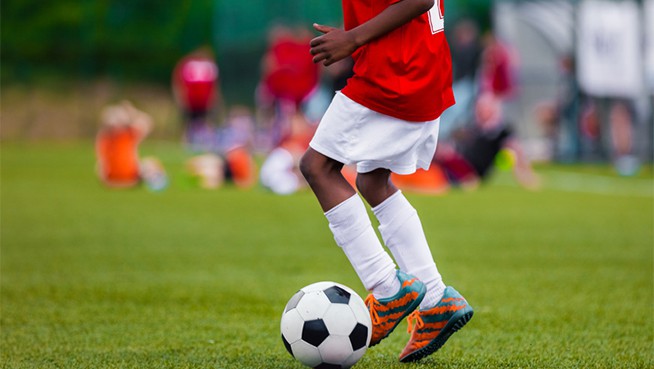Build a Speed Ladder Drill Progression
For most training and many sports teams’ facilities, the speed ladder has become an essential tool. The speed ladder gives coaches the ability to develop coordination, foot speed, agility and overall quickness in their athletes. Since it’s so portable, the speed ladder can be used in the gym or out on the field. But although it is a great tool to add to your program, the speed ladder shouldn’t take the place of other agility drills. A good training program should have variety.
Good form is the key to speed ladder drills; they’re not effective if they’re performed with speed but lacking in form. Athletes are told to get the form or pattern down first, then increase speed. The drills are not meant to leave athletes fatigued, like running Shuttle Runs would. Speed ladder drills are best performed at the start of a training session after the warm-up to ensure good quality movements.
Proper Speed Ladder Form
- Drop the hips and bend the knees to get in a good athletic position
- Push off from the balls of the feet, not the toes
- Keep the elbows bent at 90 degrees
- Pump the arms forward and backward at the shoulder joint just like when running.
- Keep the arms, shoulders and hands relaxed
- Pick up the feet, don’t drag them across the ladder
- Keep the foot flexed up (dorsi-flexed) to ensure striking the ground with the ball of the foot
Depending on an athlete’s skill level, speed ladder drills can be as basic or as complex as needed. Here is a great progression series:
Speed ladder drills can also be incorporated into sport-specific drills like receiving and passing a soccer ball, catching and dribbling a basketball, catching a football or performing a jump after going through the ladder. Here is an example of how to incorporate receiving and passing a soccer ball into a basic speed ladder drill.
Photo: Austintrx.com
RECOMMENDED FOR YOU
Build a Speed Ladder Drill Progression
For most training and many sports teams’ facilities, the speed ladder has become an essential tool. The speed ladder gives coaches the ability to develop coordination, foot speed, agility and overall quickness in their athletes. Since it’s so portable, the speed ladder can be used in the gym or out on the field. But although it is a great tool to add to your program, the speed ladder shouldn’t take the place of other agility drills. A good training program should have variety.
Good form is the key to speed ladder drills; they’re not effective if they’re performed with speed but lacking in form. Athletes are told to get the form or pattern down first, then increase speed. The drills are not meant to leave athletes fatigued, like running Shuttle Runs would. Speed ladder drills are best performed at the start of a training session after the warm-up to ensure good quality movements.
Proper Speed Ladder Form
- Drop the hips and bend the knees to get in a good athletic position
- Push off from the balls of the feet, not the toes
- Keep the elbows bent at 90 degrees
- Pump the arms forward and backward at the shoulder joint just like when running.
- Keep the arms, shoulders and hands relaxed
- Pick up the feet, don’t drag them across the ladder
- Keep the foot flexed up (dorsi-flexed) to ensure striking the ground with the ball of the foot
Depending on an athlete’s skill level, speed ladder drills can be as basic or as complex as needed. Here is a great progression series:
Speed ladder drills can also be incorporated into sport-specific drills like receiving and passing a soccer ball, catching and dribbling a basketball, catching a football or performing a jump after going through the ladder. Here is an example of how to incorporate receiving and passing a soccer ball into a basic speed ladder drill.
Photo: Austintrx.com











